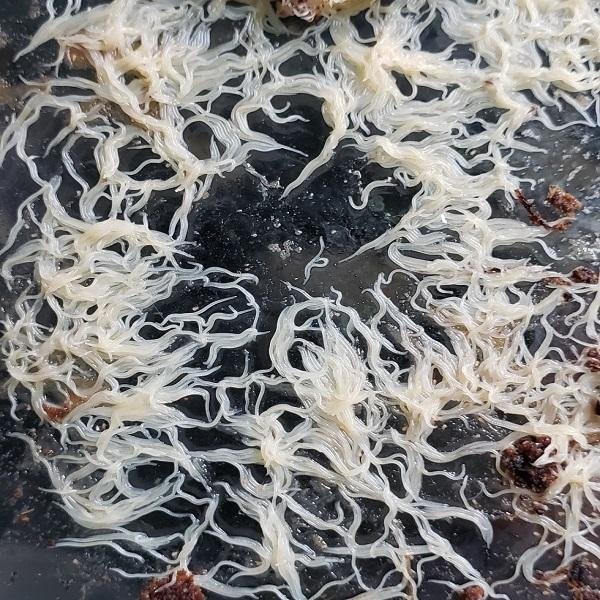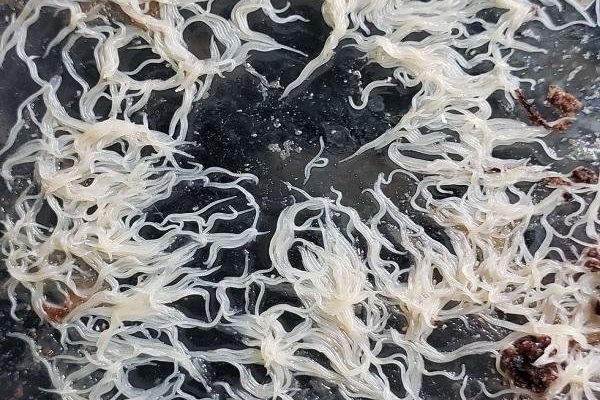
Grindal worms are often found in freshwater environments, thriving in compost bins or as a food source for fish and other creatures. You might be wondering, what exactly makes these worms so special? Well, not only do they provide nourishment for other species, but they also contribute significantly to nutrient cycling in their habitat. Think of them as the unsung heroes of the microfauna world, working quietly behind the scenes to support larger ecological systems.
What Are Grindal Worms?
Grindal worms, or Enchytraeus buchholzi, are small, white worms that can reach about two to three inches in length. They thrive in environments rich in organic matter and are often cultivated as live food for freshwater fish, especially for those fanciers of aquariums.
These worms prefer moist environments where they can feed on decomposing organic matter. In this sense, they’re not just living off scraps; they actively contribute to breaking down materials, which in turn enriches the soil or substrate they inhabit. Think of them as nature’s little recyclers, helping to keep the ecosystem balanced and healthy.
What’s interesting about Grindal worms is that they can reproduce quite rapidly. Under the right conditions, a single worm can produce a number of offspring in a short time, which can quickly lead to a healthy population. This rapid reproduction is essential in maintaining their roles within the ecosystem, particularly as a food source for various larger organisms.
The Role of Microfauna in Ecosystems
Microfauna, including Grindal worms, play critical roles in ecosystems. These tiny organisms help decompose organic materials, which is vital for nutrient cycling. When they break down plant and animal matter, they release nutrients back into the soil or water, making them available for plants and other microorganisms.
The interaction among different types of microfauna creates a diverse and interconnected web of life. Each species, from bacteria to protozoa to worms, has its unique niche, and together they contribute to the overall health of their environment. For instance, while Grindal worms help decompose organic matter, other microfauna, like nematodes, might prey on bacteria, creating a balance that prevents any one species from dominating the ecosystem.
Additionally, microfauna are essential in improving soil structure. They create spaces in the soil that allow air and water to circulate, promoting better growth for plants. This means that without creatures like Grindal worms, the soil could become compacted and less hospitable for plant life.
Interactions Between Grindal Worms and Other Microfauna
So, how do Grindal worms interact with other microfauna? It starts with their feeding habits; as they consume organic matter, they alter the habitat for other microorganisms. For example, the breakdown of organic matter by Grindal worms releases nutrients that benefit nearby bacteria and fungi, which thrive in nutrient-rich environments.
These worms also serve as a food source for various organisms. Rotifers, tiny microscopic animals, feed on Grindal worms. In this way, Grindal worms not only contribute to nutrient cycling but also become an essential part of the food chain. They help sustain the populations of other microfauna, ensuring balance and diversity in their ecosystem.
Furthermore, the presence of Grindal worms can attract other beneficial microorganisms. When they break down organic materials, they create a favorable environment for the growth of bacteria that can further enhance soil fertility. This symbiotic relationship illustrates the interconnectedness of life, where one species’ actions can support the growth and survival of others.
Why the Grindal Worm Matters
You might be wondering, why should we care about Grindal worms? The truth is, these tiny creatures have a big impact on the health of ecosystems. Because they assist in breaking down organic matter and recycling nutrients, they play a crucial role in maintaining soil quality. Without Grindal worms and their fellow microfauna, many plants would struggle to survive due to nutrient depletion.
Additionally, the presence of Grindal worms indicates a healthy environment. Their populations can be an indicator of soil fertility and ecosystem stability. In aquariums, a robust population of Grindal worms can signify that the tank environment is balanced and thriving, which is important for the health of the fish and other aquatic life.
Moreover, if you’re a hobbyist or fish enthusiast, cultivating Grindal worms can significantly benefit your setup. They are a nutritious food source that can help keep your fish healthy. So, raising them isn’t just an ecological act; it’s also a practical one for anyone who loves aquariums.
How to Cultivate Grindal Worms
If you’re interested in bringing Grindal worms into your ecosystem, the good news is they are relatively easy to cultivate. Here’s a simple method to get you started:
- Container: Use a shallow container like a plastic tub. Ensure it has drainage holes to maintain moisture.
- Substrate: Fill the container with a mix of peat moss and organic matter, such as crushed leaves or vegetable scraps. This serves as both food and habitat for the worms.
- Moisture: Keep the substrate damp but not waterlogged. Grindal worms thrive in moist conditions, so check regularly.
- Feeding: Feed them small amounts of vegetable scraps or dog food to provide nutrients.
- Harvesting: Use a fine mesh sieve to collect worms without taking too much substrate. Replace substrate as necessary to feed the worms.
By following these simple steps, you can create a thriving environment for Grindal worms, helping to support your local ecosystem as well as providing food for your fish.
Grindal worms may be small, but their interactions with other microfauna create a ripple effect throughout their ecosystems. From nutrient cycling to serving as a food source, these little creatures have an essential role in maintaining balance and health in their environments. By understanding and cultivating Grindal worms, we gain insight into the incredible complexity of nature and the importance of every living being, no matter how tiny.
So, whether you’re interested in keeping fish or simply want to learn more about the world beneath our feet, Grindal worms offer a fascinating glimpse into the delicate balance of life. Next time you think about soil or water ecosystems, remember these unsung heroes and the interconnected world they help sustain.

